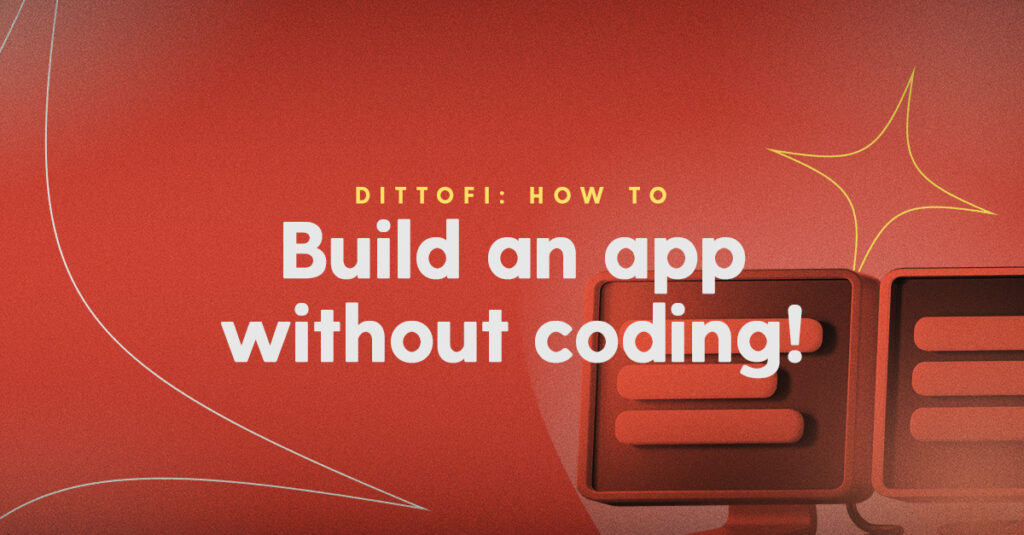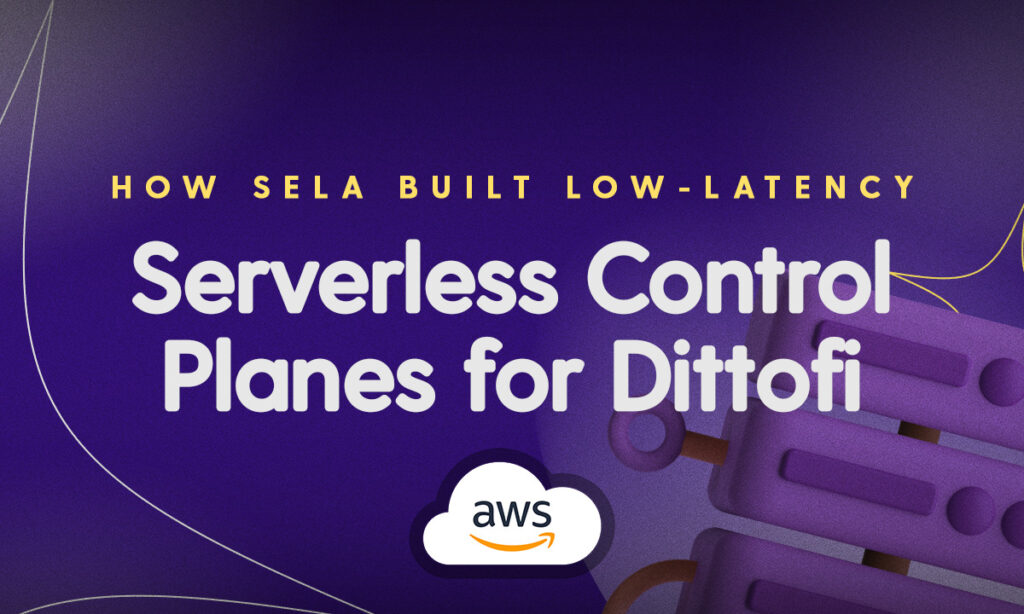
How to build an app without coding
How to build an app without coding By James Virgo You do not need to know how to code in order to build an app

At Dittofi, we’re thrilled to share some exciting news with you!
Amazon Web Services (AWS) has featured Dittofi’s innovate hosting model in their APN partners blog. This article showcases how Dittofi partnered with Sela Cloud to develop a secure, resilient & scalable hosting model for all apps built on Dittofi.
At Dittofi we are all about enabling you to bring your ideas to life faster without compromising on quality. For us, this means that Dittofi must enable mixed teams of coders & no-coders to create entirely custom, enterprise grade apps 10x faster than traditional coding. However, unlike the traditional no-code platforms, Dittofi takes a unique hybrid approach to no-code app development. This involves transforming no-code designs into simple, secure & scalable code (React & Google Go) that users can access, edit, export & own.
Dittofi gives you code level access because (as every professional software engineer knows) it is absolutely essential for companies to access their application source code as their applications evolve.
“It has become glaringly obvious that [traditional] no-code platforms can’t create complex applications.”
– Hybrid Low-Code: The Next Step in App Development, Tony Graham, DevOps.com
However, as Dittofi grew, the number of apps that we supported increased & the need for enhanced security & the ability to scale to hundreds of thousands of users emerged. During several very large scale projects, we found writing scalable code is not enough.
In fact, whilst writing scalable code is important, 60% – 70% of application scalability is found not in the code, but in the infrastructure that the application code runs on. Developing scalable infrastructure is hard & it requires highly experienced, very expensive & difficult to find resources.
To help our users launch their apps into a scalable infrastructure, Dittofi partnered up with Sela Cloud to create an innovative hybrid-tenant architecture. This solution is at the core of the Dittofi platform. All of the code for your Dittofi apps now runs on this software architecture which, along with your application code, is yours to keep. The architecture isn’t just about scalability and hardware resiliency; it’s about keeping your platform fast, cost-effective to run and highly reliable.
For a complete guide to Dittofi’s hybrid tenant architecture read:
How Sela Builds Low-Latency Serverless Control Planes for Hybrid-Tenant Developer Platforms
A hybrid-tenant architecture is all about designing applications that serve multiple tenants with different levels of isolation & resource allocation. But what does this actually mean? Well – think of it like a large area of land that houses various tenants. Some tenants might have bigger houses & some might have smaller houses depending on what they need. In this setup each tenant has the space that they need & the space to expand into, without impacting any other tenants. This means that as your application grows, you can safely expand without having to worry about the impact that other applications running in Dittofi’s hosting model.
AWS’s APN Partners blog post delves deep into the technical aspects of this architecture. Here’s a sneak peek into what’s involved.
Each tenant application is deployed to Dittofi’s hosting platform with a set of logically, and sometimes physically dedicated resources and components to isolate tenant applications to prevent resource contention issues and enable per-application autoscaling.
Tenant applications are each provisioned with a tenant-specific database and database user in RDS, along with a user for Redis with a set of privileges that allow access to a tenant-specific key prefix. They are also provisioned an ECS service to serve the backend as well as send custom metrics to CloudWatch. The assets are stored in S3 and served by their CloudFront distribution with multiple origins, CloudFront Functions, DNS records, and an optional ACM certificate for custom domain names.
Read the full AWS blog post & learn exactly how Dittofi’s AWS-backed solution is transforming the world of no-code applications.
All of your Dittofi apps are hosted using our innovative hybrid architect. This means that your apps run on a reliable, cost-effective, easy to operate, performant, and secure platform. Furthermore, this infrastructure is yours to own using Dittofi’s Automated Devops Solution (ADS).
Dittofi ADS enables you to break off a section of Dittofi’s architecture & deploy this directly into your own AWS account. This enables you to take complete control over your hosting environment, starting from a best practices infrastructure setup. Then, with close to zero downtime, you can deploy code changes directly to your production environments without the need to develop & maintain a complex code deployment pipeline.
If you’d like to learn more about how you can utilize Dittofi to build a highly scalable application, book a call with – or sign up to Dittofi & build your app today.

How to build an app without coding
How to build an app without coding By James Virgo You do not need to know how to code in order to build an app

What is Google Firebase? Everything you Need to Know in 2023
What is Google Firebase? Everything you need to know in 2023 By James Virgo App developers have mixed feelings when it comes to any technology.

Are apps built with Bubble scalable? By James Virgo How many users can your Bubble app really support? The answer to this question is not

⸺ Receive the latest news
Get notified about new articles and events